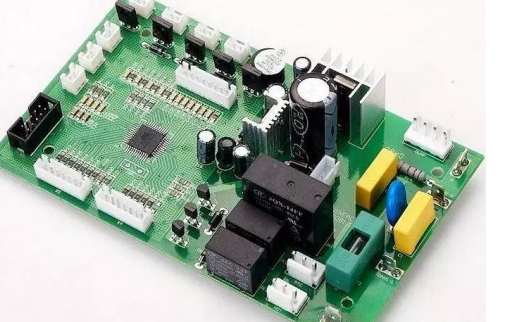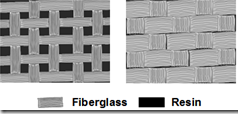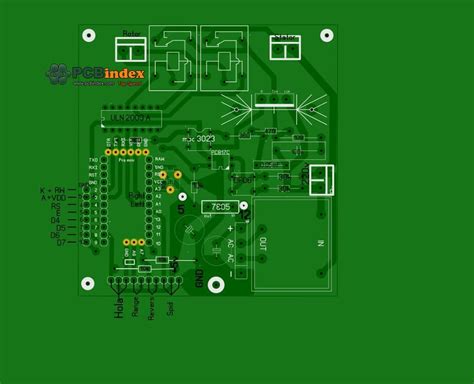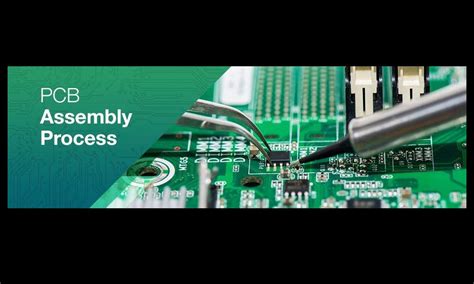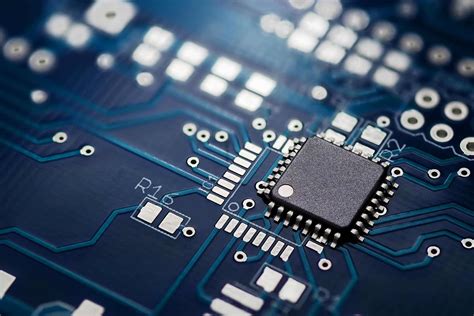The Copper Inlay PCB Market: An In-Depth Analysis
Introduction
Printed Circuit Boards (PCBs) are the backbone of modern electronics, serving as the foundation for virtually all electronic devices. Among the various types of PCBs, Copper Inlay PCBs have emerged as a significant segment, offering unique advantages in terms of thermal management, electrical performance, and mechanical stability. This article delves into the Copper Inlay PCB market, exploring its current landscape, key drivers, challenges, applications, and future prospects.
1. Understanding Copper Inlay PCBs
Copper Inlay PCBs are a specialized type of PCB where copper is inlaid into the substrate material, typically a dielectric, to enhance thermal and electrical conductivity. This inlay process involves embedding copper traces or pads within the PCB substrate, allowing for better heat dissipation and improved electrical performance. The result is a PCB that can handle higher power densities and operate more efficiently, making it ideal for high-performance applications.
2. Market Overview
The global Copper Inlay PCB market has been experiencing steady growth, driven by the increasing demand for high-performance electronics in various industries. According to recent market research, the Copper Inlay PCB market was valued at approximately USD 1.5 billion in 2022 and is projected to grow at a compound annual growth rate (CAGR) of around 8% from 2023 to 2030. This growth is fueled by the rising adoption of advanced electronics in sectors such as automotive, aerospace, telecommunications, and consumer electronics.
3. Key Drivers of the Copper Inlay PCB Market
3.1. Increasing Demand for High-Performance Electronics
As electronic devices become more complex and powerful, the need for PCBs that can handle higher power densities and thermal loads has grown. Copper Inlay PCBs offer superior thermal management and electrical performance, making them an attractive choice for high-performance applications such as 5G infrastructure, electric vehicles (EVs), and advanced computing systems.
3.2. Growth in the Automotive Sector
The automotive industry is undergoing a significant transformation with the rise of electric vehicles (EVs) and advanced driver-assistance systems (ADAS). These technologies require PCBs that can withstand high temperatures and provide reliable performance under harsh conditions. Copper Inlay PCBs are well-suited for these applications, driving their adoption in the automotive sector.
3.3. Expansion of 5G Infrastructure
The rollout of 5G networks is creating a surge in demand for high-frequency, high-power PCBs. Copper Inlay PCBs are ideal for 5G infrastructure due to their ability to manage heat effectively and maintain signal integrity at high frequencies. As 5G networks continue to expand globally, the demand for Copper Inlay PCBs is expected to grow significantly.
3.4. Advancements in PCB Manufacturing Technologies
Innovations in PCB manufacturing technologies have made it easier and more cost-effective to produce Copper Inlay PCBs. Advanced techniques such as laser direct structuring (LDS) and additive manufacturing have enabled the precise embedding of copper traces within the PCB substrate, improving the overall performance and reliability of these boards.
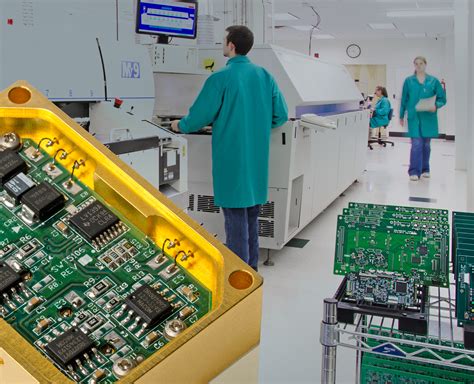
4. Challenges in the Copper Inlay PCB Market
4.1. High Manufacturing Costs
One of the primary challenges facing the Copper Inlay PCB market is the high cost of manufacturing. The inlay process requires specialized equipment and materials, which can drive up production costs. Additionally, the complexity of the manufacturing process can lead to higher defect rates, further increasing costs.
4.2. Limited Availability of Skilled Labor
The production of Copper Inlay PCBs requires a high level of expertise and precision. However, there is a limited pool of skilled labor with the necessary knowledge and experience to manufacture these advanced PCBs. This shortage of skilled workers can hinder the growth of the market, particularly in regions where the electronics manufacturing industry is still developing.
4.3. Competition from Alternative Technologies
While Copper Inlay PCBs offer several advantages, they face competition from alternative technologies such as metal-core PCBs (MCPCBs) and ceramic PCBs. These alternatives also provide excellent thermal management and electrical performance, and in some cases, may be more cost-effective. As a result, manufacturers of Copper Inlay PCBs must continuously innovate to maintain their competitive edge.
5. Applications of Copper Inlay PCBs
5.1. Telecommunications
The telecommunications industry is one of the largest consumers of Copper Inlay PCBs. These boards are used in a wide range of applications, including base stations, antennas, and network equipment. The ability of Copper Inlay PCBs to handle high frequencies and power levels makes them ideal for 5G infrastructure, where signal integrity and thermal management are critical.
5.2. Automotive Electronics
In the automotive sector, Copper Inlay PCBs are used in various applications, including engine control units (ECUs), power inverters, and ADAS systems. The robust thermal and electrical performance of these boards ensures reliable operation in the demanding environments found in modern vehicles.
5.3. Aerospace and Defense
The aerospace and defense industries require PCBs that can withstand extreme conditions, including high temperatures, vibrations, and radiation. Copper Inlay PCBs are well-suited for these applications, providing the necessary durability and performance for critical systems such as avionics, radar, and communication equipment.
5.4. Consumer Electronics
In the consumer electronics sector, Copper Inlay PCBs are used in high-performance devices such as smartphones, tablets, and gaming consoles. These boards enable the development of thinner, lighter, and more powerful devices by providing efficient thermal management and electrical connectivity.
5.5. Industrial Electronics
Industrial electronics, including automation systems, robotics, and power supplies, also benefit from the use of Copper Inlay PCBs. The ability of these boards to handle high power levels and dissipate heat effectively makes them ideal for industrial applications where reliability and performance are paramount.

6. Regional Analysis
6.1. North America
North America is a significant market for Copper Inlay PCBs, driven by the presence of leading technology companies and a strong demand for advanced electronics. The region’s focus on innovation and the adoption of cutting-edge technologies, such as 5G and EVs, are key factors contributing to the growth of the Copper Inlay PCB market in North America.
6.2. Europe
Europe is another important market for Copper Inlay PCBs, with a strong emphasis on automotive and industrial electronics. The region’s stringent regulations regarding energy efficiency and environmental sustainability are driving the adoption of advanced PCBs that offer superior thermal management and electrical performance.
6.3. Asia-Pacific
The Asia-Pacific region is the largest and fastest-growing market for Copper Inlay PCBs, fueled by the rapid expansion of the electronics manufacturing industry in countries such as China, Japan, South Korea, and Taiwan. The region’s dominance in the production of consumer electronics, telecommunications equipment, and automotive components is a major driver of demand for Copper Inlay PCBs.
6.4. Rest of the World
The rest of the world, including regions such as Latin America, the Middle East, and Africa, is also witnessing growth in the Copper Inlay PCB market. While these regions currently account for a smaller share of the global market, increasing investments in infrastructure development and the adoption of advanced technologies are expected to drive future growth.

7. Future Prospects and Trends
7.1. Integration with IoT and AI Technologies
The integration of Copper Inlay PCBs with Internet of Things (IoT) and Artificial Intelligence (AI) technologies is expected to open up new opportunities for the market. As IoT devices and AI systems become more prevalent, the demand for high-performance PCBs that can support these technologies will grow. Copper Inlay PCBs, with their superior thermal and electrical properties, are well-positioned to meet this demand.
7.2. Development of Flexible and Stretchable PCBs
The development of flexible and stretchable PCBs is an emerging trend in the electronics industry. These PCBs offer the potential for new applications in wearable devices, medical electronics, and flexible displays. Copper Inlay technology could play a key role in the development of these advanced PCBs, enabling the creation of circuits that can bend and stretch without compromising performance.
7.3. Focus on Sustainability
Sustainability is becoming an increasingly important consideration in the electronics industry. Manufacturers of Copper Inlay PCBs are exploring ways to reduce the environmental impact of their products, such as by using eco-friendly materials and processes. The development of recyclable and biodegradable PCBs is also an area of interest, as companies seek to align with global sustainability goals.
7.4. Advancements in Material Science
Advancements in material science are expected to drive further innovation in the Copper Inlay PCB market. New materials with enhanced thermal and electrical properties could enable the development of even more efficient and reliable PCBs. Additionally, the use of nanomaterials and composites could open up new possibilities for miniaturization and performance optimization.
8. Conclusion
The Copper Inlay PCB market is poised for significant growth in the coming years, driven by the increasing demand for high-performance electronics across various industries. While challenges such as high manufacturing costs and competition from alternative technologies remain, the unique advantages offered by Copper Inlay PCBs make them a valuable solution for a wide range of applications. As the electronics industry continues to evolve, Copper Inlay PCBs are likely to play an increasingly important role in enabling the next generation of advanced technologies.
In conclusion, the Copper Inlay PCB market represents a dynamic and rapidly evolving segment of the electronics industry. With ongoing advancements in manufacturing technologies, materials, and applications, the future of Copper Inlay PCBs looks promising, offering exciting opportunities for innovation and growth.

